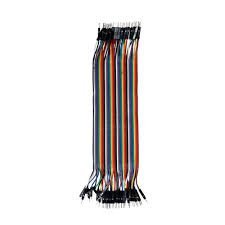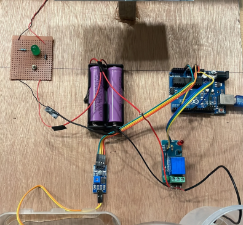Subtotal: ₹4,130.00 (incl. tax)
Air Purifier using Arduino
1 in stock
This project focuses on building a smart Air Purifier using Arduino, which monitors air quality and automatically purifies the air when pollution levels rise. The system uses a dust sensor (like GP2Y1010AU0F) to detect particulate matter (PM2.5/PM10) and a gas sensor (like MQ-135) to sense harmful gases such as CO₂, smoke, and ammonia.
The Arduino Uno reads these sensor values and compares them to a predefined safe threshold. If pollution levels are high, a DC fan is activated using a relay module. The fan draws air through a HEPA or activated carbon filter, cleaning it before releasing it back into the environment.
An LCD display shows real-time air quality data, and optional LED indicators give visual feedback (green for clean, red for polluted). This project is ideal for homes, offices, or classrooms, and is a great introduction to embedded systems, environmental monitoring, and automation using Arduino.
₹11,210.00 ₹12,390.00 (Incl. GST)
1 in stock
Air Purifier using Arduino
An Arduino-based air purifier is a smart and cost-effective way to monitor and improve indoor air quality. This project involves using sensors to detect dust and gas levels in the air and automatically activating a filtration system when pollutants exceed safe limits. It is ideal for home or office use, especially in areas with high pollution or allergens.
Components Required:
Arduino Uno
Dust Sensor (e.g., GP2Y1010AU0F)
Gas Sensor (e.g., MQ-135 or MQ-2)
12V DC fan
HEPA or carbon air filter
Relay module
LCD display (I2C or 16×2)
LED indicators (optional)
Power supply
Working Principle:
The system continuously monitors air quality using the dust and gas sensors. The dust sensor detects airborne particles like PM2.5 and PM10, while the gas sensor identifies harmful gases like ammonia, carbon monoxide, and smoke. When the Arduino detects poor air quality—based on predefined thresholds—it activates the fan using a relay module. The fan pulls air through a HEPA or carbon filter, removing harmful particles before circulating clean air back into the room.
An LCD screen displays real-time readings from the sensors, while LED indicators can provide a quick visual cue about air quality levels (green for good, yellow for moderate, red for poor).
Applications:
Home air purification
Smart home integration
Educational and DIY projects
Pollution monitoring systems
Benefits:
This project helps raise awareness of indoor air quality and provides a functional way to reduce exposure to pollutants. It’s affordable, customizable, and a great learning experience for those interested in Arduino, sensors, and environmental health.
By combining simple electronics and coding, you can build a practical device that contributes to a healthier living environment.

 Electric Vehicle Charging System
Electric Vehicle Charging System 



There are no reviews yet.